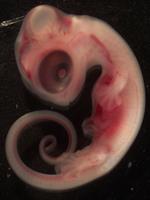We Are Here To Help You
Do you need help or information and you don’t know who to turn to?
Contact us!Do you need help or information and you don’t know who to turn to?
Contact us!
 Heart of reptiles is traditionally considered as an organ
with two atria and one ventricle. However, this is not entirely true, in
particular for crocodylians that have a fully divided, four-chambered heart as the
one found in birds and mammals. Among squamate reptiles (lizards and snakes)
there is also one lizard group with extraordinary heart – monitor lizards
(Varanidae). Monitors are very agile and fast animals occurring Africa, Asia,
and Australia. Since their life-histories demand mammal-like pressures, the
monitors exhibit functionally divided cardiac ventricle into "left"
and "right" side. The "left" side generates high systemic
mammal-like blood pressures.
Heart of reptiles is traditionally considered as an organ
with two atria and one ventricle. However, this is not entirely true, in
particular for crocodylians that have a fully divided, four-chambered heart as the
one found in birds and mammals. Among squamate reptiles (lizards and snakes)
there is also one lizard group with extraordinary heart – monitor lizards
(Varanidae). Monitors are very agile and fast animals occurring Africa, Asia,
and Australia. Since their life-histories demand mammal-like pressures, the
monitors exhibit functionally divided cardiac ventricle into "left"
and "right" side. The "left" side generates high systemic
mammal-like blood pressures.
In close collaboration with the group of developmental cardiologists in Amsterdam, the researchers at the Institute of Anatomy investigated the developing monitor hearts. In monitor ventricle we can find three septa expressing the evolutionary conserved transcription factors Tbx5, Irx1, and Irx2, orthologues of which mark the mammalian ventricular septum. These molecular studies were corroborated by functional analysis of electrical impulse propagation by optical mapping, which showed that the monitor septum also harbours precursors of the ventricular conduction system. Therefore, the heart of monitors can be seen as a conceptual stage between the hearts of non-crocodylian reptiles and the fully septated hearts of crocodylians, birds, and mammals.
These findings were published in journal Development, one of the top tier ones in the field of Developmental Biology and Molecular Biology.
Publication: Identification of the building blocks of ventricular septation in monitor lizards (Varanidae).
Hanemaaijer J, Gregorovicova M, Nielsen JM, Moorman AFM, Wang T, Planken RN, Christoffels VM, Sedmera D, Jensen B.
Development. 2019 Jul 8. pii: dev.177121. doi: 10.1242/dev.177121. [Epub ahead of print] PMID: 31285354
Shared first and corresponding authors (JH and MG, DS and BJ).
Figure: embryo of a monitor lizard (VA04LL05z1605.jpg)